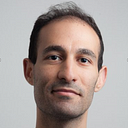There’s a Way to Actually Measure Your Creativity
Creativity has long been difficult to quantify. New research is changing that.
“Creativity” may be one of the most widely used and least understood words in the English language. Whenever I try to define it — or whenever I ask someone else to define it — it never quite feels right.
But the tide is shifting, and research is slowly revealing the creative process and developing better ways of measuring it. Here’s a look at some of that evolving evidence along with a link to a fascinating new test that quickly tells you how creative you are.
Creativity in the brain
Creativity is a special kind of problem-solving. You don’t need it to solve problems with a single solution (e.g. 5+5=10), but you do need it to solve problems with many solutions (e.g. “How do I convey love in a painting?”).
When you think of creativity in this way, you notice a common core to different types of creative activity. Although music, visual art, and writing seem like very different activities, all of them are open-ended problems. There’s no “best painting” or “best novel” or “best song”. It all depends on your preference and interpretation, which is what makes creativity so wonderful.

